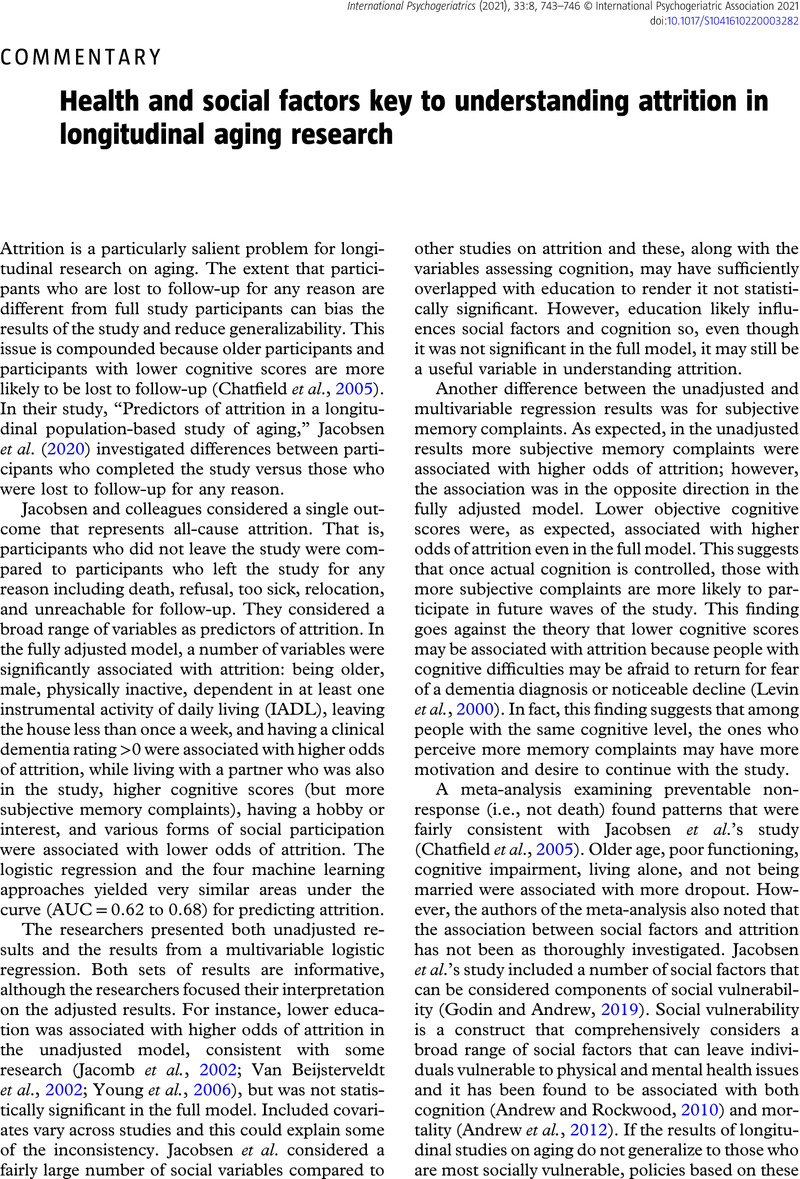Crossref Citations
This article has been cited by the following publications. This list is generated based on data provided by Crossref.
Quick, Matthew
Rutter, Emily
Tyas, Suzanne L.
Maxwell, Colleen
Law, Jane
and
Oremus, Mark
2022.
Urban-rural variation in the association between social support availability and cognitive function in middle-aged and older adults: Results from the baseline Tracking Cohort of the Canadian Longitudinal Study on Aging.
Health & Place,
Vol. 77,
Issue. ,
p.
102894.
Okpara, Chinenye
Adachi, Jonathan
Papaioannou, Alexandra
Ioannidis, George
and
Thabane, Lehana
2023.
Exploring participant attrition in a longitudinal follow-up of older adults: the Global Longitudinal Study of Osteoporosis in Women (GLOW) Hamilton cohort.
BMJ Open,
Vol. 13,
Issue. 7,
p.
e066594.





